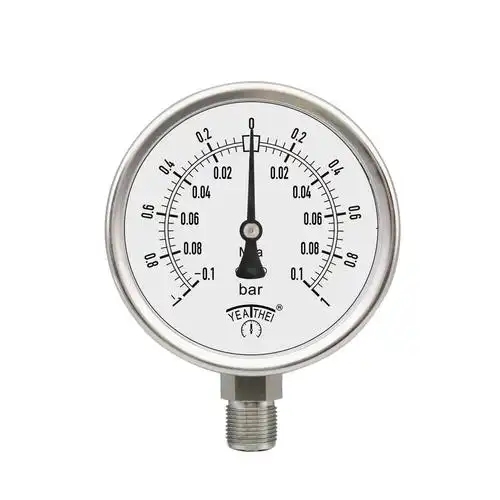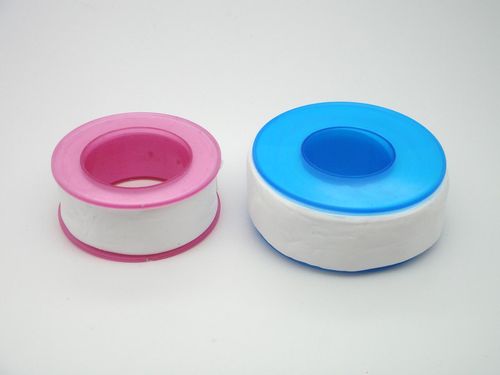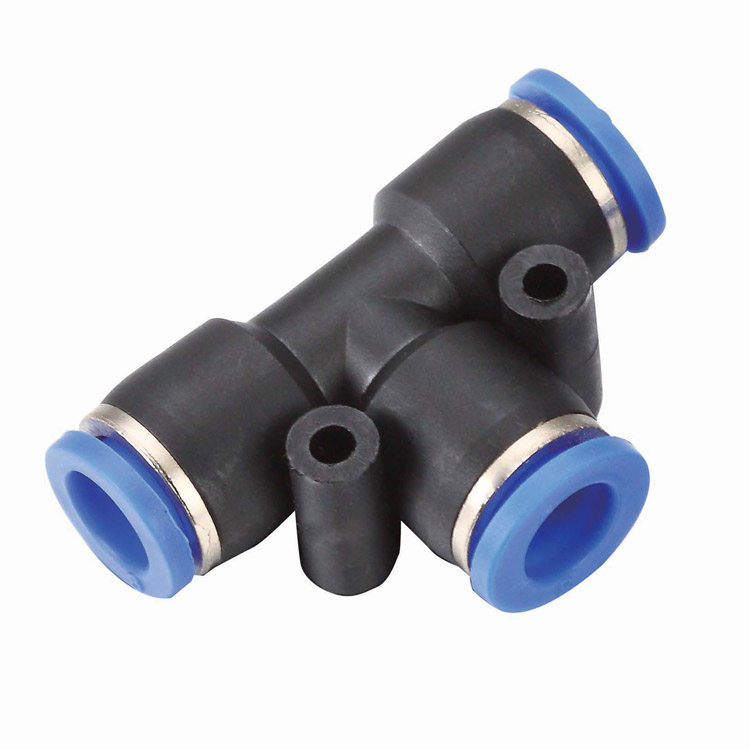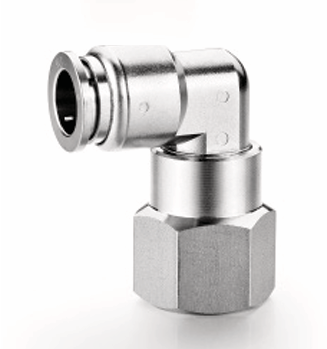Table of Contents
ToggleIntroduction
In the world of pneumatic systems, airtight connections are crucial for maintaining efficiency and safety. As someone who has worked extensively with air fittings, I understand the frustration that comes with leaks. They can disrupt operations, lead to wasted resources, and even pose safety risks. Therefore, knowing how to stop air fittings from leaking is essential for anyone involved in the design, installation, or maintenance of pneumatic systems. In this article, I will share practical tips and solutions to help you prevent leaks in your air fittings.
1. What Causes Air Fittings to Leak?
Leaks in air fittings can often be attributed to improper installation, wear and tear, incompatible materials, and environmental factors. By understanding these causes, I can take proactive steps to prevent leaks in my systems.
Improper Installation
One of the most frequent causes of leaks is improper installation. If the tubing is not inserted fully into the fitting or if the fitting is not tightened adequately, leaks can develop. Always ensure that follow the manufacturer’s guidelines during installation to avoid this issue.
Wear and Tear Over Time
Air fittings can experience wear and tear over time, especially in high-pressure applications. Seals and gaskets can degrade, leading to potential leaks. Regular inspections are essential to catch these issues before they become significant problems.

Incompatible Materials or Fittings
Using incompatible materials can also result in leaks. For example, certain plastics may not withstand the chemicals in the fluids being transported, leading to degradation and failure. Always check compatibility before selecting fittings for your systems.
Environmental Factors
Environmental factors, such as temperature fluctuations and exposure to chemicals, can contribute to the deterioration of fittings. Take these factors into account when selecting fittings for specific applications, opting for materials that can withstand the conditions they will face.
2. How Can I Tell If My Air Fittings Are Leaking?
Regular checks using visual inspections, soap bubble tests, and pressure testing are essential for maintaining the integrity of air fittings. By incorporating these methods into your maintenance routine, can quickly identify and address any leaks.
Visual Inspections
Regularly perform visual inspections of your fittings to check for any signs of wear, damage, or corrosion. This includes looking for cracks, frayed hoses, or any other abnormalities that could compromise the seal.
Soap Bubble Tests
One of the simplest and most effective methods for detecting leaks is the soap bubble test. You can apply a soap solution to the fittings, and if bubbles form, it indicates a leak. This method is quick and allows you to pinpoint the exact location of the leak.
Pressure Testing
Sometimes perform pressure tests to ensure that the system can hold pressure without any drops. This involves pressurizing the system and monitoring for any changes in pressure over time. If the pressure drops, it indicates a leak that needs to be addressed.

3. What Can I Use to Seal Air Fittings?
When it comes to sealing air fittings, there are several options available. Using thread seal tape, liquid sealants, and ensuring the integrity of O-rings and gaskets are effective methods for sealing air fittings. Selecting the right sealing method based on the application is crucial for preventing leaks. Here are some effective sealing methods I recommend:
Thread Seal Tape
Thread seal tape, commonly known as Teflon tape, is a popular choice for sealing threaded fittings. It helps create a tighter seal by filling in the gaps between the threads. Always ensure that use tape specifically designed for pneumatic applications to withstand the pressures involved.

Liquid Sealants
Liquid sealants can also be effective for sealing air fittings. These sealants are applied to the threads before tightening the fitting, providing a reliable seal. Using liquid sealants that are compatible with the materials in your system to avoid any adverse reactions.

O-Rings and Gaskets
O-rings and gaskets are essential components in many pneumatic fittings. Always check that these seals are in good condition before installation. If they show signs of wear or damage, replace them to ensure a proper seal.

4. Are There Specific Types of Tape for Sealing Air Fittings?
When it comes to sealing air fittings, not all tapes are created equal. PTFE tape is the best choice for sealing air fittings due to its chemical resistance and ability to withstand high temperatures. Proper application techniques are essential for achieving an effective seal. Here are some types of tape I find particularly useful:
PTFE Tape (Teflon Tape)
PTFE tape is the most commonly used tape for sealing air fittings. It is chemically resistant and can withstand high temperatures, making it ideal for pneumatic applications. Wrap the tape around the threads in the direction of tightening to ensure it does not unravel during installation.
Other Sealing Tapes
There are other sealing tapes available, such as silicone tape and thread sealant tape. While these can be effective, I prefer PTFE tape for its versatility and reliability in pneumatic systems.
Guidelines for Proper Tape Application
To ensure an effective seal, follow these guidelines when using tape:
- Clean the Threads: Make sure the threads are clean and free of debris before applying tape.
- Wrap Evenly: Wrap the tape evenly around the threads, avoiding excessive overlap that could obstruct flow.
- Avoid Overuse: Avoid using too much tape, as this can lead to blockages and hinder the flow of air or fluid.
5. How Do I Properly Install Air Fittings to Prevent Leaks?
Proper installation of air fittings is crucial for preventing leaks. Here’s a step-by-step guide to ensure a secure connection:
Step 1: Prepare the Tubing
Start by cutting the tubing to the appropriate length and ensuring that the cut is clean and straight. A clean cut helps the fitting seal properly.
Step 2: Insert the Tubing
For push-to-connect fittings, insert the tubing fully into the fitting until it reaches the stop. For threaded fittings, ensure that the threads are aligned correctly before tightening.

Step 3: Tighten the Fitting
If you’re using threaded fittings, tighten them to the manufacturer’s recommended torque specifications. Over-tightening can damage the fitting or tubing, while under-tightening can lead to leaks.
Step 4: Check Seals and Gaskets
Before finalizing the connection, check that any seals, such as O-rings or gaskets, are properly seated and undamaged. This step is crucial for ensuring a tight seal.
Summary
Following proper installation techniques, including preparing the tubing, inserting it correctly, tightening fittings to the right specifications, and checking seals, is essential for preventing leaks in air fittings.
6. Can I Reuse Air Fittings, and Will They Still Be Airtight?
Reusing air fittings can be a cost-effective option, but there are important considerations to keep in mind:
Factors to Consider Before Reusing Fittings
- Wear and Damage: always inspect fittings for signs of wear or damage before reusing them. If notice any cracks, corrosion, or degraded seals, replace the fitting.
- Compatibility: ensure that the reused fittings are compatible with the new application and materials being used.
Best Practices for Inspecting and Preparing Fittings for Reuse
When reusing fittings, follow these best practices:
- Clean Thoroughly: clean the fittings to remove any debris or contaminants that could affect the seal.
- Replace Worn Seals: If the fitting has O-rings or gaskets, replace them to ensure airtightness.
- Test for Leaks: After reinstallation, perform leak tests to confirm that the fittings are airtight.
Summary
Reusing air fittings can be feasible, but it’s essential to inspect them for wear and damage, ensure compatibility, and follow best practices for cleaning and sealing to maintain airtightness.
7. What Maintenance Should I Perform on Air Fittings to Prevent Leaks?
Regular maintenance is key to preventing leaks in air fittings. Here are some practices can incorporate into your routine:



Routine Inspections
Conduct routine inspections of my air fittings to check for signs of wear, damage, or corrosion. This proactive approach allows you to catch potential issues before they lead to leaks.
Cleaning Fittings
Keeping fittings clean is essential for maintaining their performance. Regularly clean fittings to remove any debris or contaminants that could compromise the seal. A simple wipe-down with a suitable cleaner can make a significant difference.
Replacing Worn Seals and Gaskets
Pay close attention to the condition of O-rings and gaskets. If notice any signs of wear or damage, replace them immediately to ensure a proper seal.
Summary
Regular maintenance practices, including routine inspections, cleaning, and replacing worn seals, are essential for preventing leaks in air fittings. By staying proactive, can ensure the reliability and efficiency of your pneumatic systems.
Conclusion
In conclusion, stopping air fittings from leaking is essential for maintaining the efficiency and safety of pneumatic systems. By understanding the causes of leaks, employing effective sealing methods, following proper installation techniques, and conducting regular maintenance, can significantly reduce the risk of leaks in your systems. If you have any questions or need personalized recommendations for pneumatic fittings, feel free to reach out!

